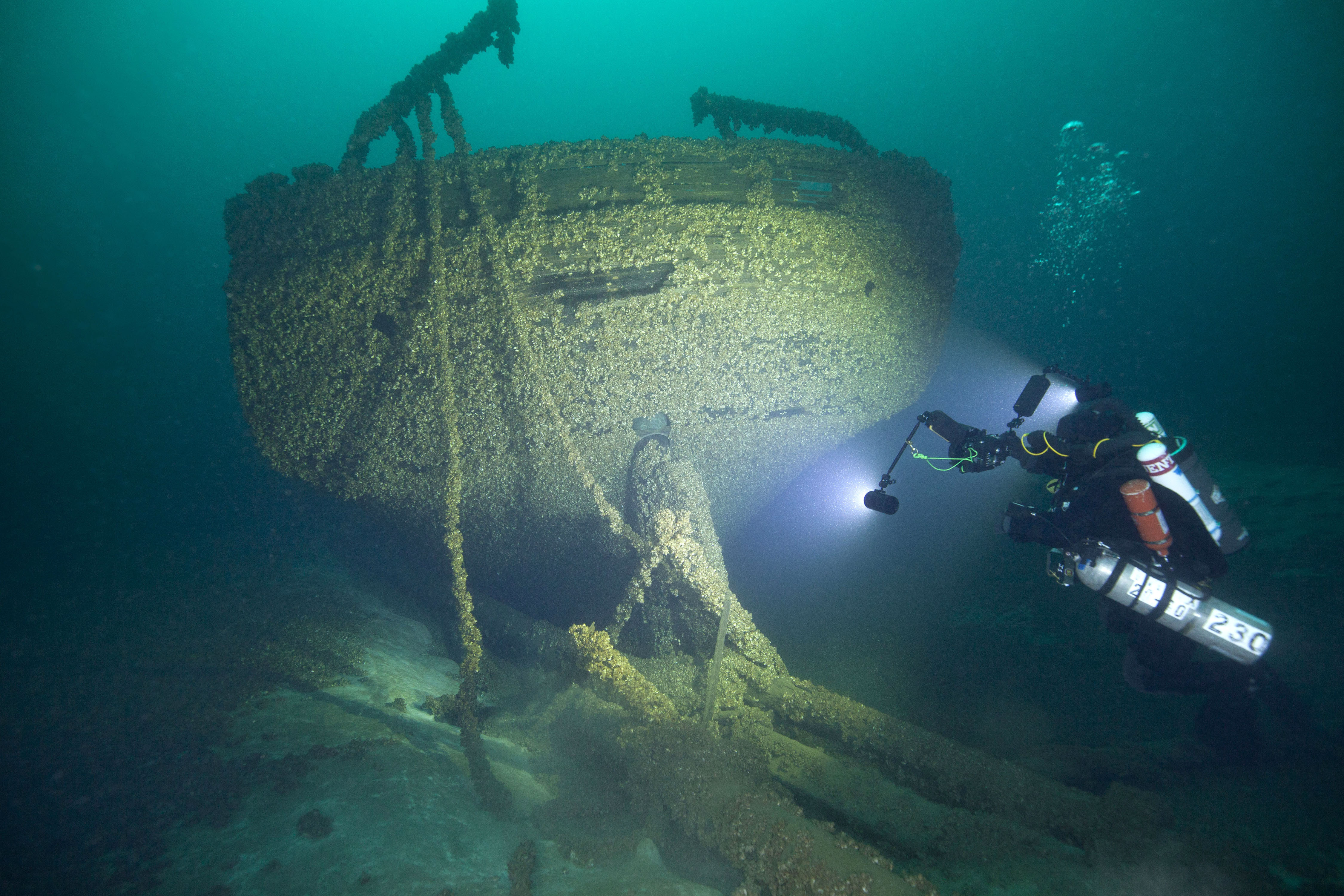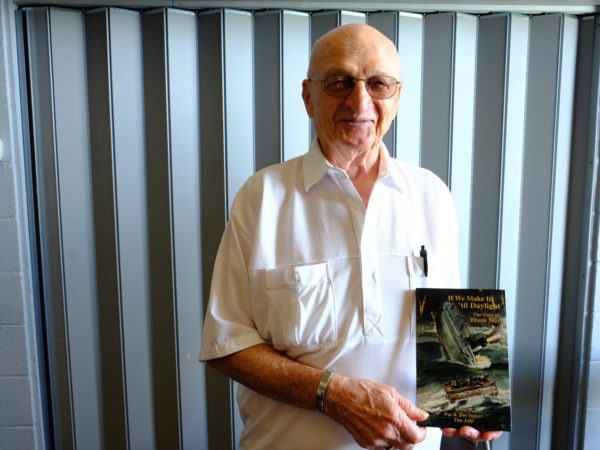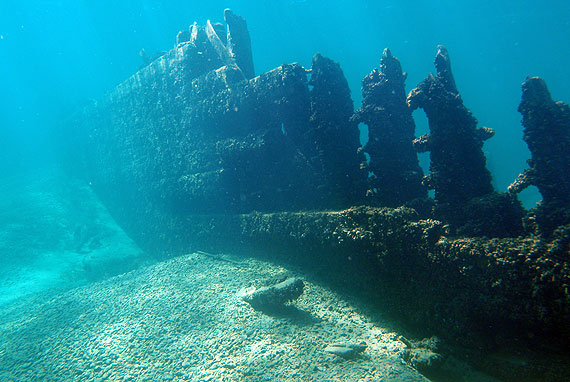
By Corey Williams, Associated Press
DETROIT (AP) — A diver and maritime history buff has found two schooners that collided and sank into the cold depths of northern Lake Michigan more than 140 years ago.
Bernie Hellstrom, of Boyne City, Michigan, said he was looking for shipwrecks about 10 years ago when a depth sounder on his boat noted a large obstruction about 200 feet (60 meters) down on the lake bottom near Beaver Island.
“I’ve made hundreds of trips to Beaver Island and every trip I go out the sounder is on,” he told The Associated Press on Friday. “But if you happen to see something that’s not normal, you go back. A lot are nothing but fish schools. This was 400 feet of boat. There’s nothing out there that big that’s missing.”
He returned to the area in June with a custom-made camera system and discovered the Peshtigo and St. Andrews about 10 feet (3 meters) apart with their masts atop one another. The hull of one of the ships has a huge gash.
It had been believed the ships sank in 1878 farther to the east in the Straits of Mackinac in Lake Huron. But only one ship could be found and that was thought to be the St. Andrews.
“They never found the second boat,” said Hellstrom, 63.
Hellstrom brought technical divers in to record video of the wrecks. Madison, Wisconsin-based marine historian Brendon Baillod was recruited to help solve the mystery.
Baillod said he searched through old news reports and learned that the Peshtigo and St. Andrews did hit each other and sink between Beaver and Fox islands, northwest of Charlevoix, Michigan.
The Peshtigo was 161 feet (49 meters) long and carrying coal. The St. Andrews was 143 feet (43 meters) long and carrying corn. The collision was blamed on confusion in signal torches, he said.
Two of the Peshtigo’s crewmen were lost. Survivors from both ships were rescued by another passing schooner, according to Baillod.
Wayne Lusardi, Michigan’s state maritime archaeologist, calls finding the actual resting place of the Peshtigo and St. Andrews a “fantastic discovery.”
“You can argue that any new discovery is important because it really gives you a first-time look at something that has been lost and missing for such a long time,” Lusardi said.
He added that the Peshtigo and St. Andrews “had been mistakenly identified as two vessels up in the Straits for decades.”
“Now, it begs the question: What are those wrecks?” he said.
An estimated 6,000 shipwrecks sit on the bottoms of the Great Lakes, according to Cathy Green, executive director of the Wisconsin Maritime Museum in Manitowoc.
“If you think about it, cities like Chicago, Detroit and Milwaukee would never have been able to develop without the water highway,” Green said. “When material remains of that history is found, it’s a big deal to historians and archeologists.”
___
This story has been corrected to show that the St. Andrews was carrying corn, not coal.
Featured image shows diver John Scoles maneuvers around the wreckage of the schooners Peshtigo and St. Andrews. Photo provided by John Janzen via AP.




